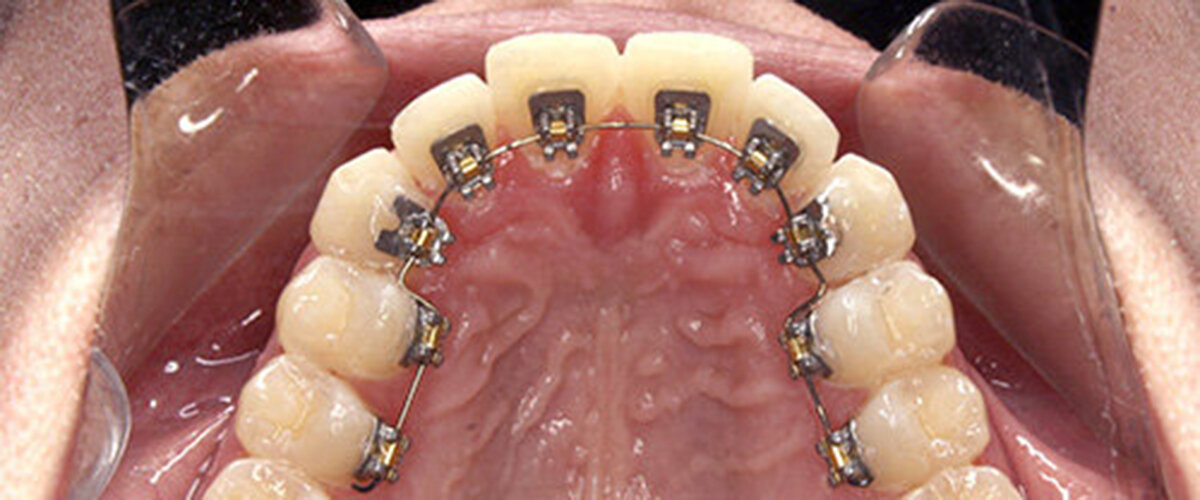What Are Lingual Braces?
Modern patients are very concerned with their appearance during orthodontic treatment. More patients have received treatment than ever before since the introduction of Invisalign aligners in 1998 (mainly because aligners straighten the teeth without visible braces). Unfortunately, not all patients have problems that can be corrected with plastic aligners alone. Clear brackets have been around for decades, but up-close they still look like braces. Recent advances in 3D imaging and CAD/CAM technology (Suresmile) have facilitated a third option called “lingual braces.” Suresmile (discussed at length in several of my previous blog articles) is the key to modern lingual orthodontics.
Lingual braces are on the inside of the teeth
The word “lingual” means tongue. Lingual braces (also known as invisible braces) are attached to the inside surfaces of the teeth that face the tongue. There they are practically invisible from the outside, even up-close. What are the advantages and disadvantages of lingual braces, and who is eligible for this treatment option?
Advantages of lingual braces
Besides being invisible, lingual braces have other advantages. First, they are far more capable and efficient than clear aligners for complex movements like correcting rotations, changing the heights of teeth, and closing extractions spaces. Additionally, even if oral hygiene is not ideal, any discoloration that occurs (white spots) will be on the inside of the teeth where it is not visible.
Challenges associated with lingual braces
As you might imagine, there are also challenges associated with having braces on the inside of the teeth. It takes a couple of weeks to get used to having braces next to your tongue. The brackets and wires will feel a little rough initially and they may affect your speech for a while. Lingual braces are also more difficult to keep clean. In fact if you have periodontal problems, inside braces may actually make things worse. Invisible braces may not be possible for patients with short crowns. Your orthodontist will determine this at your initial exam.
Lingual braces are more difficult and more expensive
Lingual braces are also more challenging for your orthodontist and his staff. Many of the forces applied on the inside of the teeth react just opposite of those applied to the outside. The distances between the teeth are shorter on the inside, requiring smaller and lighter wires. This may add to the treatment time compared to conventional braces. Working upside-down and on inside of the teeth also requires more chair-time at each appointment. Finally, the CAD/CAM technology (Suresmile) and precision brackets required for lingual treatment cost your orthodontist more than those used on the outside. Trickier adjustments, longer treatment times, and higher appliance costs mean that fees for lingual braces are generally more than those for regular braces.
If you have a job that would not allow you to have regular braces, or if you just don’t want anyone to know that you’re undergoing treatment, consider lingual braces. 3D imaging, Suresmile diagnosis and treatment software, and robotically created wires are the keys to modern lingual orthodontics. Would you consider having braces if they were completely undetectable? Find an orthodontist who offers lingual braces today!
NOTE: The author, Dr. Greg Jorgensen, is a board-certified orthodontist who is in the private practice of orthodontics in Rio Rancho, New Mexico (a suburb on the westside of Albuquerque). He was trained at BYU, Washington University in St. Louis, and the University of Iowa in the United States. Dr. Jorgensen’s 25 years of specialty practice and 10,000 finished cases qualify him an expert in two-phase treatment, extraction and non-extraction therapy, functional orthodontics, clear aligners (Invisalign), and multiple bracket systems (including conventional braces, Damon and other self-ligating brackets, Suresmile, and lingual braces). This blog for informational purposes only and is designed to help consumers understand currently accepted orthodontic concepts. It is not a venue for debating alternative treatment theories. Dr. Jorgensen is licensed to diagnose and treat patients only in the state of New Mexico. He cannot diagnose cases described in comments nor can he select treatment plans for readers. Because he has over 25,000 readers each month, it is impossible for him respond to all questions. Please read all of the comments associated with each article as most of the questions he receives each week have been asked and answered previously. The opinions expressed here are protected by copyright laws and can only be used with written permission from the author.

